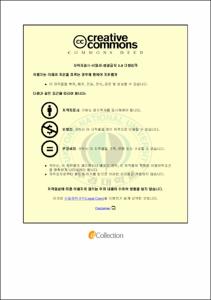한국 갈수기의 정량적 정의와 시공간분포
- Abstract
- For a long time, people in East Asia have believed that there have been the Little Water Season (LIWAS) every year during winter and spring. However it was only in a qualitative concept through approximate estimation. This study has changed this qualitative concept to objective and quantitative value using the Available Water Resources Index (AWRI, Byun and Lee, 2002) that came from daily precipitation data.
At first, the criteria value of LIWAS-Korea was defined as the 25 percentile of the averaged AWRI of 57 stations for 30 years (1981-2010) per date. In the same way, the LIWAS of 57 stations was defined. Next, the onset and the ending dates of the LIWAS were calculated for 39 years (1974-2012) and the spatiotemporal distributions and the intensity of them were analyzed.
As a result, it was noted that big and important differences on the water resources climate exist in this narrow area and in other climatic characteristics, and the differences from station to station were quantitated as follows. The criteria value of the LIWAS-Korea was defined as 143.74 mm. In the LIWAS per station, the highest value was found in Geoje (205.28 mm) and the lowest was in Uiseong (107.56 mm). The onset (ending) dates of the LIWAS-Korea was February 9 (May 11) with the duration of 92 days. The LIWAS of each station showed that the earliest onset (ending) date was at Namhae and Tongyeong on January 21 (in same stations on April 22) and the latest was at Gangneung on March 25 (same, June 14).
In inter-annual variations of 39 years (1974-2012), the delaying trends of the onset (about 7 days/decade) and the ending (about 4.5 days/decade) dates of the LIWAS-Korea were detected. Also delaying trends in the onset (ending) date of the LIWAS were found at 54 (40) stations and the shortening trends of the LIWAS duration were found at 42 stations. Average water deficit was the highest in Namhae. In the 39 years, the water deficit and the intensity of LIWAS were the strongest in Namwon (1994) and Daegwallyeong (1980), respectively.
- Issued Date
- 2014
- Awarded Date
- 2014. 2
- Type
- Dissertation
- Publisher
- 부경대학교
- Affiliation
- 대학원
- Department
- 대학원 환경대기과학과
- Advisor
- 변희룡
- Table Of Contents
- Contents i
List of Figures ii
List of Tables iv
Abstract v
1. 서론 1
2. 자료 6
3. 갈수기의 정량적 정의 및 시공간 분포 8
3.1. 갈수기의 정의 8
3.2. 한국 갈수기 9
3.3. 지점별 갈수기 11
3.4. 갈수기의 연 변동 16
4. 갈수강도 20
4.1. 갈수위험도 20
4.2. 갈수기의 물 부족 22
4.3. 장기 갈수기 26
5. 갈수기의 발생 특성 30
5.1. 갈수기 지속기간의 특징 30
5.2. 갈수기 빈도의 시공간 분포 33
6. 요약 및 결론 36
REFERENCES 38
- Degree
- Master
- Files in This Item:
-
-
Download
 한국 갈수기의 정량적 정의와 시공간분포.pdf
기타 데이터 / 1.86 MB / Adobe PDF
한국 갈수기의 정량적 정의와 시공간분포.pdf
기타 데이터 / 1.86 MB / Adobe PDF
-
Items in Repository are protected by copyright, with all rights reserved, unless otherwise indicated.